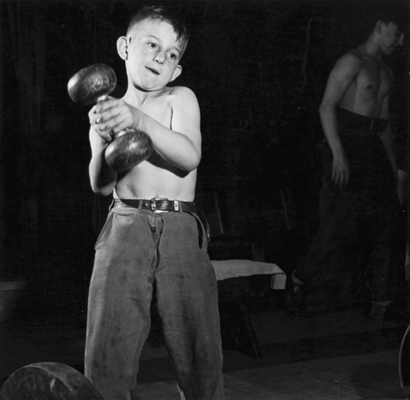

Excerpted, in slightly edited form, from Boys' Club of Pittsburgh News, 21 March 1948.
The Boys' Club of Pittsburgh was organized on March
21, 1923, by the
Rotary Club of Pittsburgh. Penn Spangler was president of Rotary that
year and David I McCahill, Sr., chairman of its Boys' Work Committee. Mr.
McCahill was named as the Club's first president and James W. Lodge was
appointed Managing Director.
First quarters were on the upper floors of a building at 28th
Street and Penn Avenue, which had at one time been a department
store. In 1923...it housed a variety of enterprises, including a small
moving picture theater.
The original incorporators, who signed the petition to the Court, were
David I. McCahill, Sr., William S. Diggs and Bert H. Smyers. The first
board of directors was chosen almost entirely from the membership of the
Rotary Club. The present board, too many to reprint here, still has many
Rotarians as members but includes prominent men of all faiths and in
almost all walks of life, from labor leaders to corporation presidents.
Within the first two years it became evident that the original quarters
were inadequate if the Club were to be wholly useful. The shift of
population away from the area was also gradually accelerating. An
extensive campaign which produced contributions from all classes and all
sections of the city made it possible, in the autumn of 1928, to acquire
the fine building now occupied at 45th and Butler Streets.
The late Charles D. Armstrong, President of the Armstrong Cork Co., was
largely instrumental in obtaining it.
The medical and dental facilities of the Club have been features since its
inception. A complete examination is given each boy when he joins and the
report is given his parents or guardians.
When the gymnasium is used for entertainments, or as an auditorium, the
stage is seen to be, from the inside, the important addition it is. Miss
Sophie G. McCormick presented this as the John S. McCormick Memorial.
Aside from its principal use as a stage it also provides space for the
boxing ring and houses the nightly efforts of the
weightlifters.
Activities now under way in the Club include, on the top floor,
woodworking, photography, art and printing, on a pre-vocational level, and
art instruction at a higher level and at the purely recreational level for
younger boys. This floor also houses a Plastic Group Room, a Senior and
Intermediate Billiard Room and a Senior Games Room.
On the second floor are the two clinics mentioned, the boxing room with
showers, the Hobby Shop, the Dramatic Arts Room, the Model Aeronautics
Room and the Music Instruction Room, which also does duty on alternate
nights as an additional boxing room with a full sized ring. This floor
also has an entrance to the balcony which overlooks the gymnasium from
three sides.
The first floor has the offices, the gymnasium, the McCormick addition
already mentioned, a large Library, Junior
Billiard and Games Rooms, and a
kitchen which has frequently been of great service both to the Club and to
the Lawrenceville community, as when it made it possible to use the Boys'
Club for relief headquarters when the 1936 flood hit the district.
The basement houses the full size swimming pool, large showers, lockers,
and four bowling alleys. Activities on the first floor and basement
continue always throughout the year. Many of the pre-vocational
activities, on the other hand, languish with the arrival of warm weather.
The Boys' Club of Pittsburgh is a member of the Federation of Social Agencies of Allegheny County and receives its principal support from the Community Chest, of which it is a Red Feather Agency. Its distinctive polices derive from its affiliation from the Boys' Clubs of America, Inc. of which it has been a member since its organization.